![]()
![]()
![]()
Use LEFT and RIGHT arrow keys to navigate between flashcards;
Use UP and DOWN arrow keys to flip the card;
H to show hint;
A reads text to speech;
16 Cards in this Set
- Front
- Back
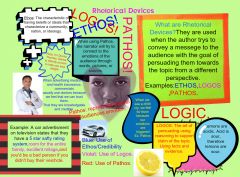
|
RHETORICAL DEVICES
|
|

|
*ETHICS:
-to make the audience decide right or wrong about what is being presented to it. -political issues, national beliefs, religious issues,etc. -typically has contrasting colors symbolizing the difference between good and evil. |
|

|
*EMOTION:
-to make the audience feel something about what is presented to it. -children, animals, illness, memories,etc. -"tugs at your heart strings" |
|

|
*LOGIC:
-to make the audience think about what is presented to it. -Statistics, facts, authorities, etc.... -Very straight forward, and not "FLUFF". -It has a very scientific, factual approach. |
|
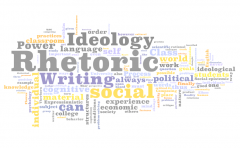
|
*The art of communicating ideas.
|
|

|
*A proposition supporting or helping to support a conclusion.
|
|

|
*Deductive reasoning is a basic form of valid reasoning:
-Deductive reasoning, or deduction, starts out with a general statement, or hypothesis, and examines the possibilities to reach a specific, logical conclusion. -Deductive reasoning, if something is true of a class of things in general, it is also true for all members of that class. (EXAMPLE: "all men are mortal.Harold is a man. Therefore, harold is mortal.") for deductive reasoning to be sound, the hypothesis must be correct. it is assumed that the premise, "all men are mortal" and "harold is a man" are true.Therefore, the conclusion is logical and true. |
|
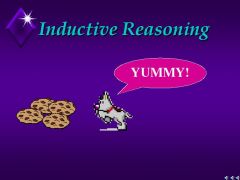
|
*inductive reasoning is the opposite of deductive reasoning.
-inductive reasoning makes broad generalizations from specific observations. Even if all of the premises are true in a statement, inductive reasoning allows for the conclusion to be false. (EXAMPLE: "harold is a grandfather. harold is bald. Therefore, all grandfathers are bald." The conclusion does not follow logically from the statements. |
|

|
*the recurrence of words, phrases, or lines.
|
|

|
*when a speaker or writer expresses ideas of equal worth with the same grammatical form.
|
|

|
*formal,dignified language.
|
|
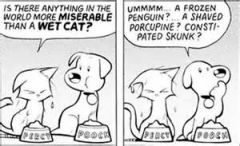
|
*A question asked solely to produce an effect or to make an assertion and not to elicit a reply,as "what is so rare as a day in June?"
|
|

|
*the language that communicates ideas beyond the literal meaning of words.
-Figurative language can make descriptions and unfamiliar or difficult ideas easier to understand. |
|

|
*A figure of speech that compares two things that have something in common.
-does not use like or as. |
|

|
*A figure of speech that compares two things that have something in common.
-Uses like or as. |
|
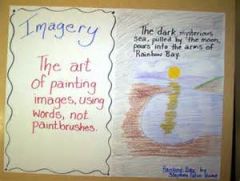
|
*descriptive words or phrases that a writer uses to re-create sensory experiences.
-By appealing to the 5 senses, imagery helps a reader imagine exactly what the characters and experiences being described are like. |

